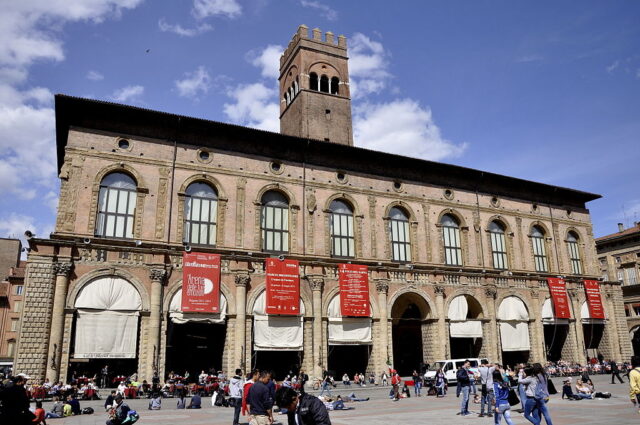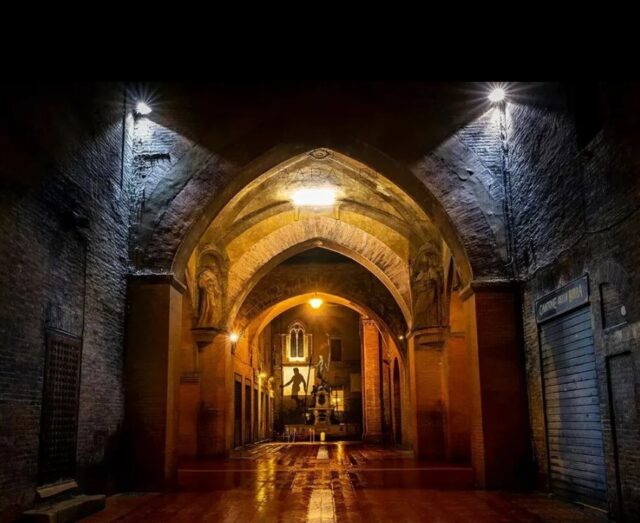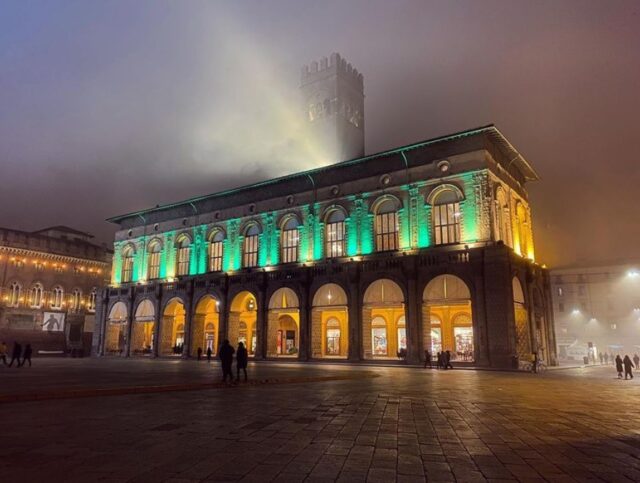Palazzo del Podesta
The Palazzo del Podesta in Piazza Maggiore is the first seat of the Bolognese government. Built-in the Middle Ages, it is famous for the curious acoustic effect of the Voltone del Podestà nicknamed the “wireless telephone”. It is also one of the main attractions in Piazza Maggiore in Bologna.
The Palazzo del Podesta of Bologna is located in Piazza Maggiore. This square is a lively and always buzzing space, the scene of events, concerts, and shows by street artists. The wide arches of its portico welcome Bolognese and visitors every day. The visitors stop to enjoy a coffee in the bars overlooking the square and the Basilica of San Petronio.
Together with Palazzo Re Enzo overlooking via Rizzoli, the Palazzo del Podesta belongs to a medieval nucleus of buildings intended to house the seat of the city government. They were erected following the opening of Piazza Maggiore by the Municipality. The palace was the first to be built. It is therefore the oldest of the three.
Its construction dates back to 1201-1203 and precedes that of the other buildings by about forty years. made necessary by the need for larger spaces to contain the municipal offices. Hence the name of “Palazzo Vecchio” (old palace) was attributed to it to underline the role of the first seat of the Bolognese government.


Originally, therefore, the Palazzo del Podesta was a building in its own right where the Podesta, the highest office in the city, and its officials met in the Late Middle Ages. The interiors of the building, therefore, had to reflect the importance of the place: the Salone del Podestà was built on the main floor, still the largest room in Bologna.
Born as a courtroom, over time the hall became a public theater (from 1581 to 1767), where the second version of the Opera Euridice was staged, and later a place used for the game of ball and pallacorda. Decorated by Adolfo de Carolis between 1911 and 1928 with the frescoes of the Fasti of the city of Bologna, the elegant hall is open today only for events. It is accessed via the staircase of the nearby Palazzo Re Enzo.
From an architectural point of view, the current appearance of the building is the result of a reconstruction commissioned in 1484 by Giovanni II Bentivoglio, lord of Bologna at the time. The plan was never completed due to the expulsion of the Bentivoglio family from the city at the beginning of the sixteenth century. Proof of the incompleteness is found in the Romanesque façade, which the architect Aristotle Fioravanti redesigned in the Renaissance style. If you look closely at the upper part of the building, you can see that, unlike the neighboring buildings, it has no cornice and battlements.
The tiles bearing over 3,000 rosettes, all different from each other, are also the result of the renovation of the exterior, carved on the supports of the portico. From the top of the roofs stands the Torre dell’Arengo. It is a quadrangular bell tower made of wood which was replaced by a brick structure in 1259. Inside there is the so-called bell, which once rang in case of extraordinary events such as battles or city assemblies, to rally the Bolognese population. The tower rests on the pillars of the Voltone del Podestà, a large vault located at the intersection of the two roads that cross the complex of buildings. It is the only architectural element dividing the two.


Some curiosities about the palace are linked to the Voltone del Podesta. In medieval times, under the arches of the portico, there were the shops of artisans, fruit sellers, and merchants. Not far away from there, where the offices of the notaries which were located under the staircase leading to the first floor. However, these were not the only operations taking place under the roof of the Palazzo del Podesta. The macabre spectacle of death sentences that were executed in the palazzo, was announced from the balcony above the portico. They were usually carried out under the vault. Looking up towards the vault, you can still see the wooden beams from where the condemned to death were hung.
The Voltone del Podesta, however, hides another secret. Under the gaze of the four protectors of the city (San Francesco, San Domenico, San Procoloand San Petronio), whose statues decorate the pillars of the vault, visitors flock to experience a particular acoustic effect. This curious effect is often referred to as a wireless telephone and consists of approaching one of the corner pillars with the forehead facing the wall: by straining the ear it is possible to hear who is speaking at the opposite corner of the vault, thanks to the path taken by the sound along the surface of the vault. A visit to the Palazzo del Podestà is allowed only on the occasion of events.

